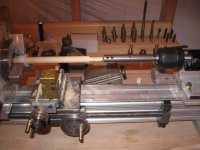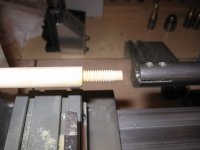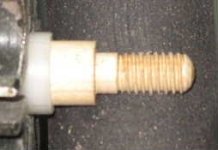I'm trying to learn how to do some basic cue repair and I'm having trouble threading the tenon for a ferrule. I know that many here will poo-poo the use of a tenon threader, but I don't have the wherewithal to do live threading.
I turned the ferrule end of a practice shaft down to 5/16". I have a 5/16-18 tenon threader that I bought from a fellow AZ'er. Now I thought that using the tenon threader would be like using a metal die, but the threader doesn't seem to want to "grab" the end of the shaft and pull itself on, the way that a metal die does on a rod.
I have the shaft mounted in my lathe chuck. The tenon threader is mounted on a aligning rod that is mounted in a drill chuck in my tailstock. But I just can't seem to get the tenon threader started. I'd hate to turn down the shaft any more, but I'm thinking that might be my problem.
Any tips from you guys?
Thanks in advance,
Gary
P.S. I have Chris Hightower's book and have read through the ferrule section in it.
I turned the ferrule end of a practice shaft down to 5/16". I have a 5/16-18 tenon threader that I bought from a fellow AZ'er. Now I thought that using the tenon threader would be like using a metal die, but the threader doesn't seem to want to "grab" the end of the shaft and pull itself on, the way that a metal die does on a rod.
I have the shaft mounted in my lathe chuck. The tenon threader is mounted on a aligning rod that is mounted in a drill chuck in my tailstock. But I just can't seem to get the tenon threader started. I'd hate to turn down the shaft any more, but I'm thinking that might be my problem.
Any tips from you guys?
Thanks in advance,
Gary
P.S. I have Chris Hightower's book and have read through the ferrule section in it.


